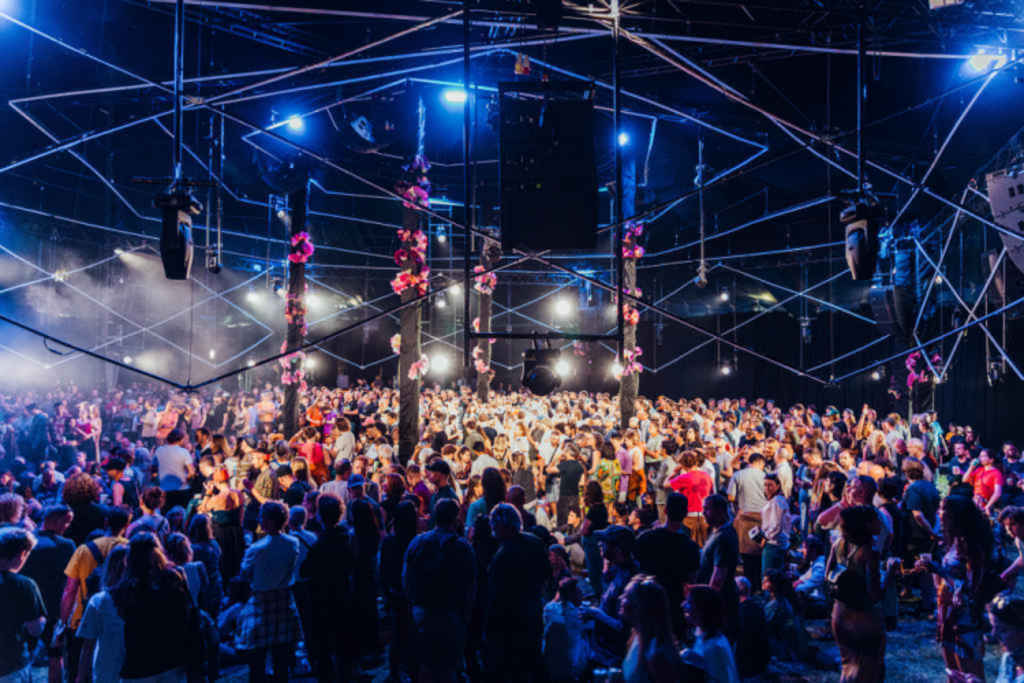Polygon’s mission is to take spatial audio beyond headphones and into fields and festivals. Paul Milligan finds out how it was done at Polygon Live LDN.
It’s tempting to think modern music festivals have become more about the overall experience than the music itself, often viewed as a weekend away, rather than a place to see your favourite band. This means the quality of the sound provided sometimes takes a back seat to the other ways you can occupy your time at a festival.
But there is one new arrival on the festival scene determined to provide the best auditory experience even if you are still standing in a muddy field. Polygon began life eight years ago, made-up of close friends who were all audio enthusiasts, with a passion for audio and for music, says Nico Elliott, Polygon founder and CEO. The launch of Polygon was in small part influenced by L-Acoustics releasing the L-ISA spatial audio processor in 2016, “We approached L-Acoustics to understand if the technology could be deployed in the round, the answer was yes. 2017 was the first year in which we used recorded content rather than spacialising music live to playback in a circular configuration, and the results were really exciting and the feedback was really interesting, so we incorporated the company the following year,” adds Elliott.
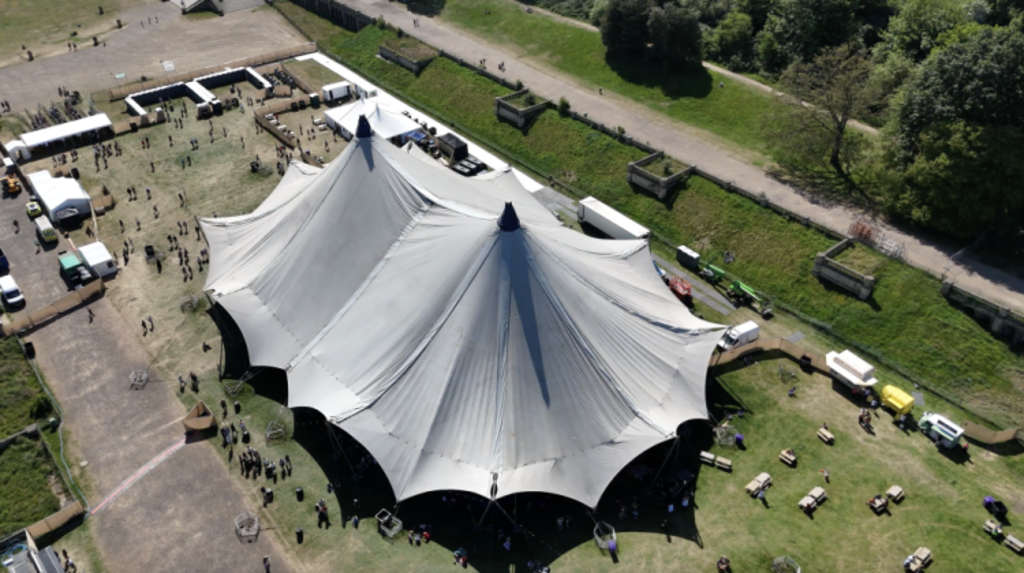
Polygon started life as a production company with the intent of delivering immersive audio at its very core he adds, “but also trying to incorporate other immersive technologies that could provide the customer with a different live music experience. That’s the mission, to really provide a completely different way to experience music than in the current format that you would do, which is either stereo or often mono listening experience.”
Polygon and L-Acoustics first worked together at Thailand’s Wonderfruit festival in 2018, when Polygon used L-ISA immersive sound technology to create a 360° sound experience. In recent years, Polygon and L-Acoustics have also collaborated at MDLBeast in Saudi Arabia, AFTER2049 in Singapore, and the Amsterdam Dance Event (ADE). Eighteen months ago Polygon began the planning for its first ever UK event, to be held in Crystal Palace Park in London in May 2025, in what Elliott describes as its “first large foray into the world of being a promoter as well as a production company.” To make the festival a reality Polygon partnered with Full Fat 360, an independent events promoter. “They know all of the nitty gritty that’s involved with delivering a festival here in the UK, and we wanted someone to do that part so we could focus on the technical production,” explains Elliott.
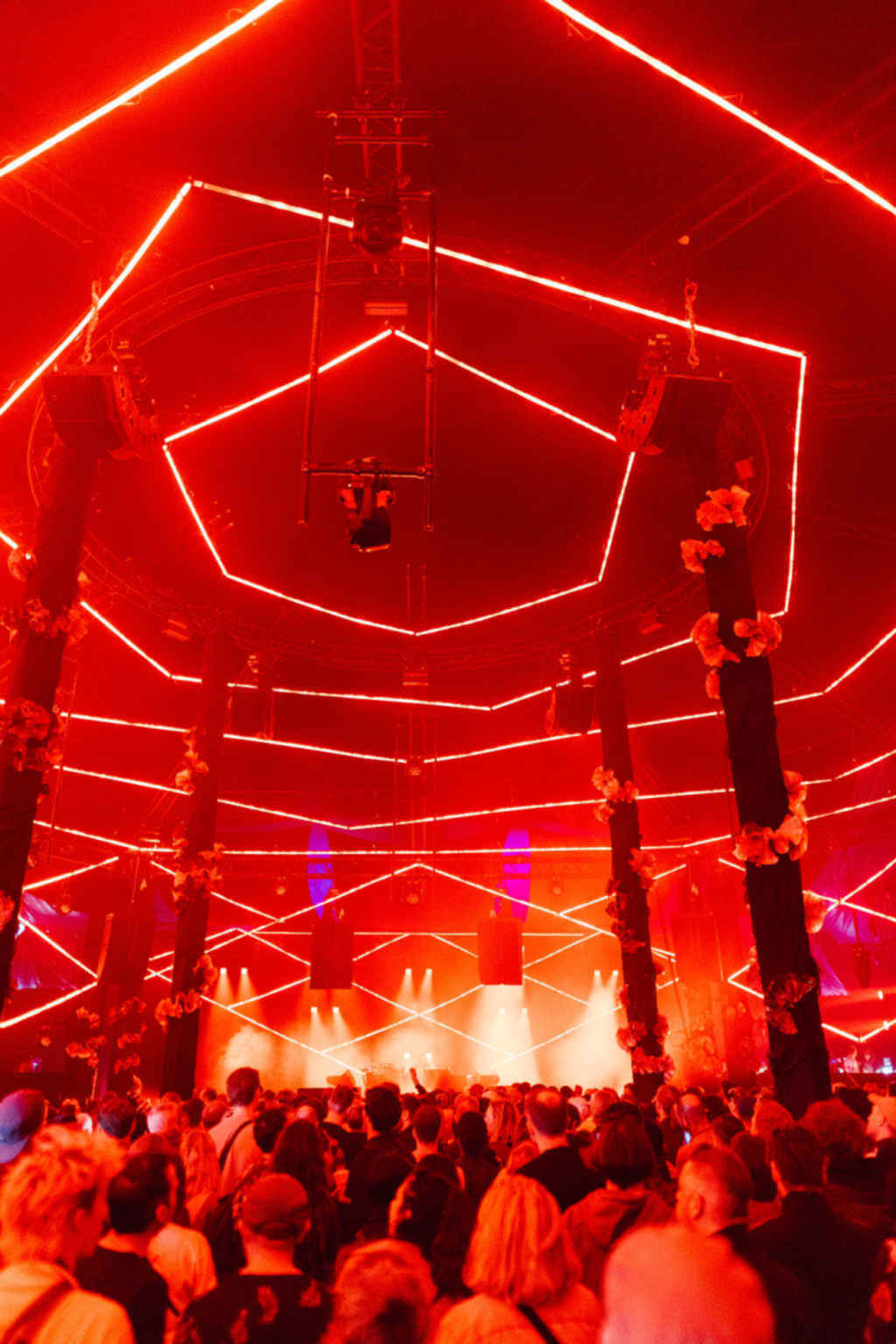
The centrepiece of Polygon Live LDN is a hexagonal shaped dome, 25m in diameter and 9m high, with a capacity of 5,000. Inside the dome you will find 12 L-Acoustics speaker arrays around the audience, one giant festival grade wall of subs, and four overhead line arrays raining clear sound from above. The total count amounts to a little less than 100 speakers in over 25 unique positions.
Why go for a hexagonal dome shape in particular? We like things to be in the round says Elliott. “Whether it’s an octagon, hexagon, or dodecahedron etc, whatever the shape that then allows you to rig speakers in a circle, that’s what we go for. We want the customers to be really immersed, we’re trying to give people a completely different listening experience, not a slight variation on what you can experience today.”
The desire to deliver a superior auditory experience at a music festival is a fundamental driver for Polygon. “Sometimes you hear beautiful stereo sound systems, but typically you are not in that UKsweet spot where you’re getting a true stereo image. The beauty of being in a 360-degree environment is you don’t have to turn it up so much. I like talking to people when I’m on a dance floor, I don’t like shouting or cupping my ears to try and hear someone. It allows you to get the volumes to a good point without affecting neighbours and in London that’s a real challenge we have to face.”
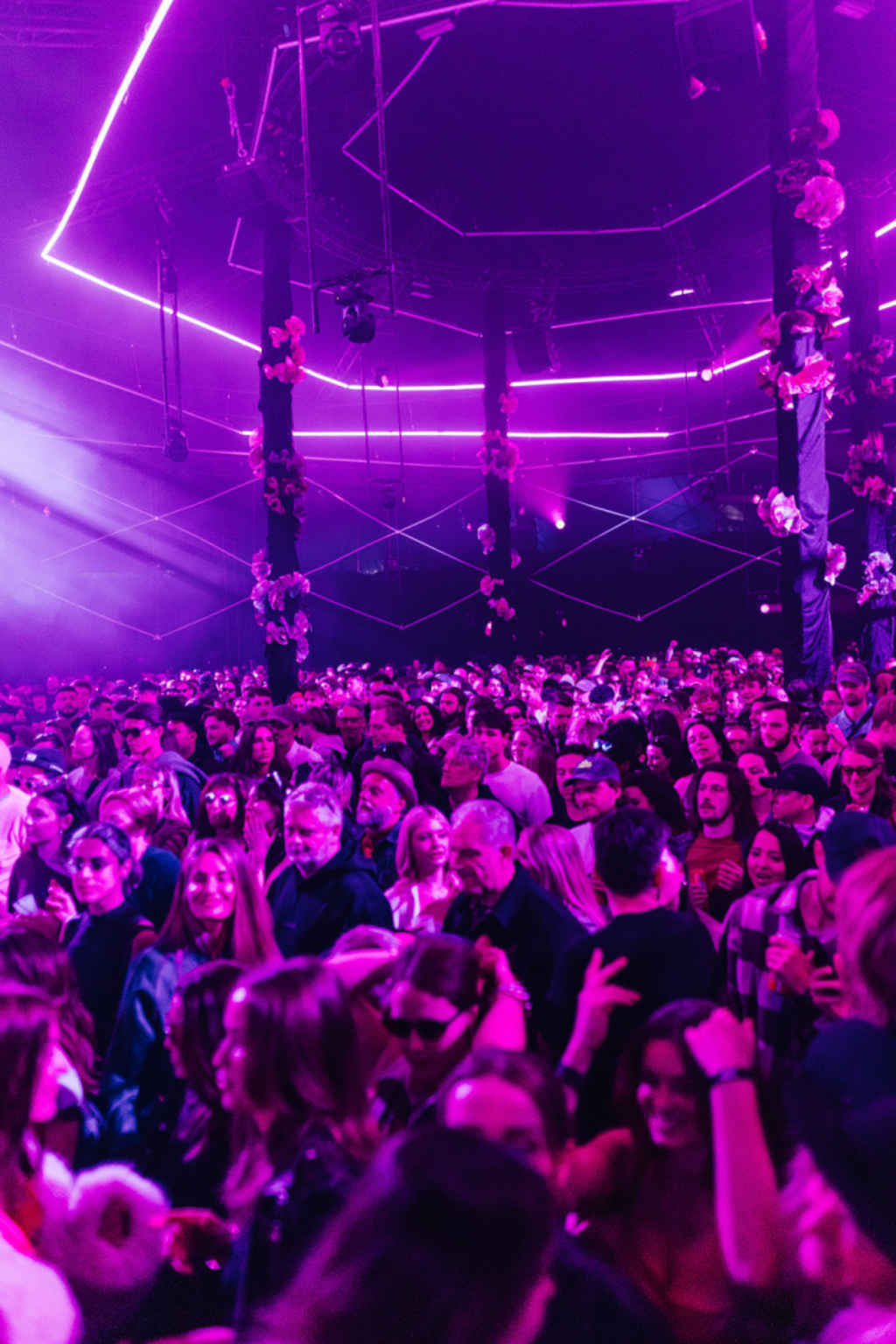
The process for Polygon starts long before its events open their doors, even before the truss goes up. It begins when Polygon’s spatial audio engineers’ step into the studio with performing artists, using L-Acoustics L-ISA to break down each track into individual elements so that the artist can reimagine each element in a 360° hemisphere of moving, living sound.
Is Polygon fine tuning the sound while the tents are being erected? Or does it have to wait for construction to be completed before it starts work? It’s very challenging from that perspective admits Elliott, “in an ideal world you’d want to spend a full day in a studio with an artist, probably more if they haven’t done it before. Then they want to go away and make adjustments, because when you produce something and you compose something for a stereo set of speakers, it sounds very different and the amount of space you have when you have an array of 12, 14, 20+ speakers, it actually allows you to do a lot more and think about how to do this differently.”
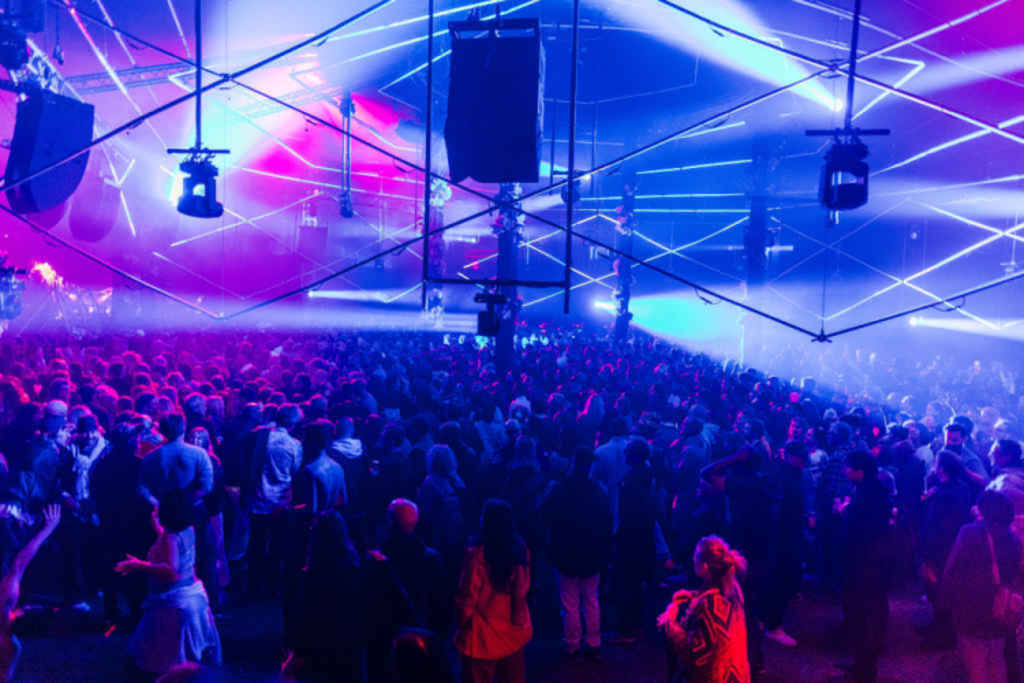
all pix: Polygon Live
The main system comprises a frontal system of four hangs of L-Acoustics’ L2D long-throw loudspeakers, while the surround system is eight hangs of three A15 (two Focus and one Wide), and the heights amount to four hangs of four A10 Wide. Low-end is provided via an endfire array (where the antenna’s directional beam is aimed at the ends of the array) of 18 KS28 subwoofers, which pushes all of the energy into the audience and keeps the stage sonically clean. Mixing duties were handled on DiGiCo Quantum series consoles, while signal processing, routing and conversion were managed using equipment from DirectOut Technologies and RME, ensuring audio integrity across the entire spatialised system.
How important is having a dome shape to the success of an immersive project? “Ultimately we want speakers around everyone, on the dance floor you want people to be surrounded by speakers, so it doesn’t have to be a hemisphere, it could be a square, it could be a rectangle, but the hemisphere is the one that lends itself most easily to rigging speakers in an equidistant way from each other around the audience, that’s why we go with that. We’ll often put speakers facing out as well, we call them outfills because people don’t necessarily always want to be within a dome, sometimes when it gets very busy it’s quite nice to be listening to high quality audio, but not necessarily inside the dome,” says Elliott.
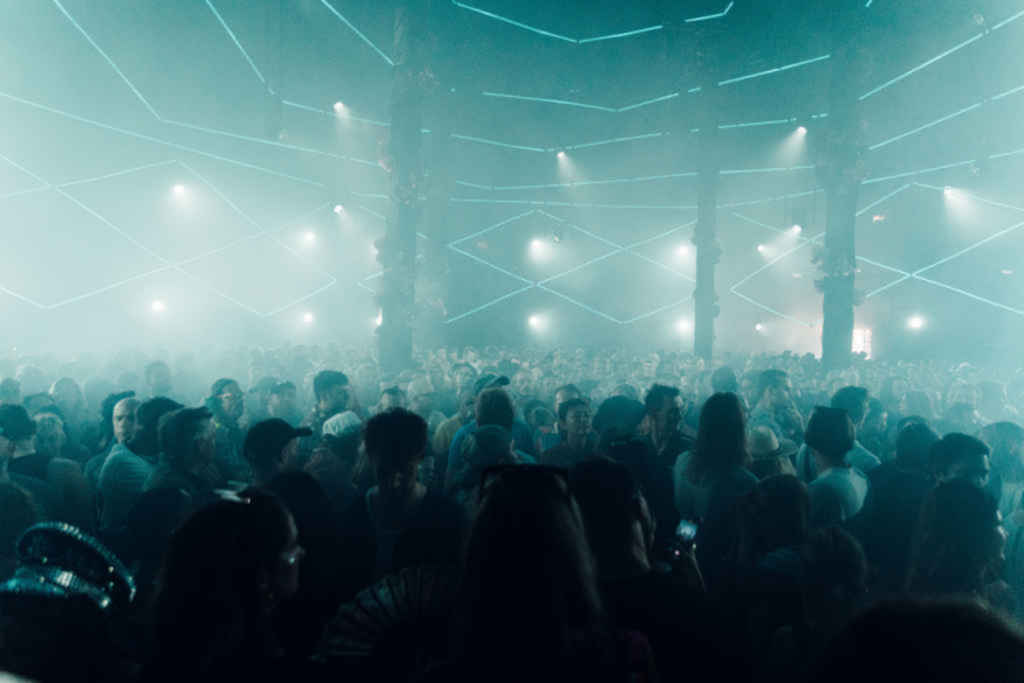
To make the dome as immersive as possible it had to undergo extensive acoustic treatment, but how do you acoustically treat a 5,000-capacity tent placed in the middle of a field? Polygon decided to treat the tent rather than the inner dome itself, “because we didn’t want people to feel restricted and surrounded by the dome,” explains Elliott. He explains how it was achieved, “We acoustically treated the walls of the tent with serge drapes, we hung them around the entire perimeter of the tent. Overhead we were using serge drapes in large squares or baffles using catenary wires stretched as close to the walls of the tent but surrounding the overhead part of the dome”.
As well as the hexagonal dome, which is itself inside a larger tent area, Polygon Live LDN also featured a VIP area, complete with its own private spatial audio listening space, as well as immersive monitoring for the artists. To allow more space for the audience, a separate, fully spatialised front of house (FoH) area was also set up outside
of the main dome, which was another logistical challenge to be overcome. “The FoH position in an ideal world is in the middle of a dome, but often we are challenged because of the number of people trying to get in the dome, so this time we actually created our own immersive FoH monitoring position that was opposite the stage but just back from the dome. So we had a FoH which had exactly the same audio setup as the main dome, albeit a much smaller one, it was an 8m by 8m position with exactly the same 12 speakers in a circle and four overhead positions, so that the monitoring engineers could listen to what’s going on during the day.”
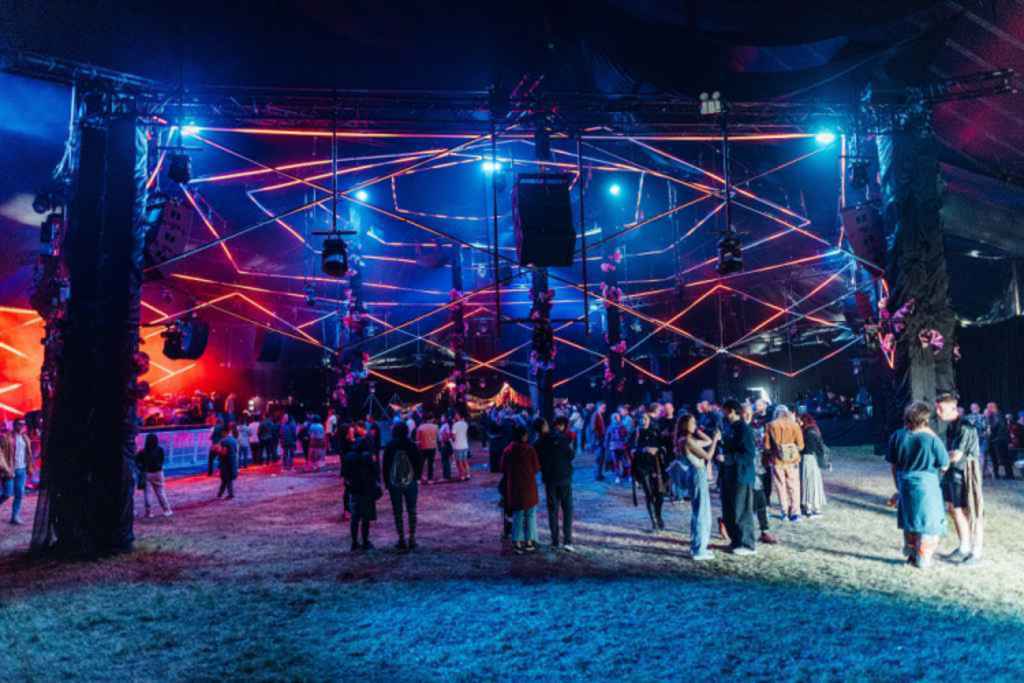
Audio was clearly the top priority at Polygon Live LDN, but lighting also played its part in creating a truly immersive experience. A network of LEDs cocoons the stage, and the lights are programmed to pulse and swirl with the music. “We talk a lot about being in the middle of the music, and we use lighting to accentuate and increase the level of immersion in the experience, so it can provide value to the music,” explains Elliott. Polygon is currently working on different techniques where the spatialisation data can feed into the lighting consoles and the lighting can synchronise itself. At the moment some elements are pre-prepared, and the music is time-coded so the lighting can be perfectly synchronised with it. “It’s a really elevated experience when you can achieve that. Unless there’s a lot of pre-production work and until we can get the audio speaking with the lighting data, which is difficult, you’re ultimately busking the lighting show and getting things perfectly in-sync timing is more challenging.”
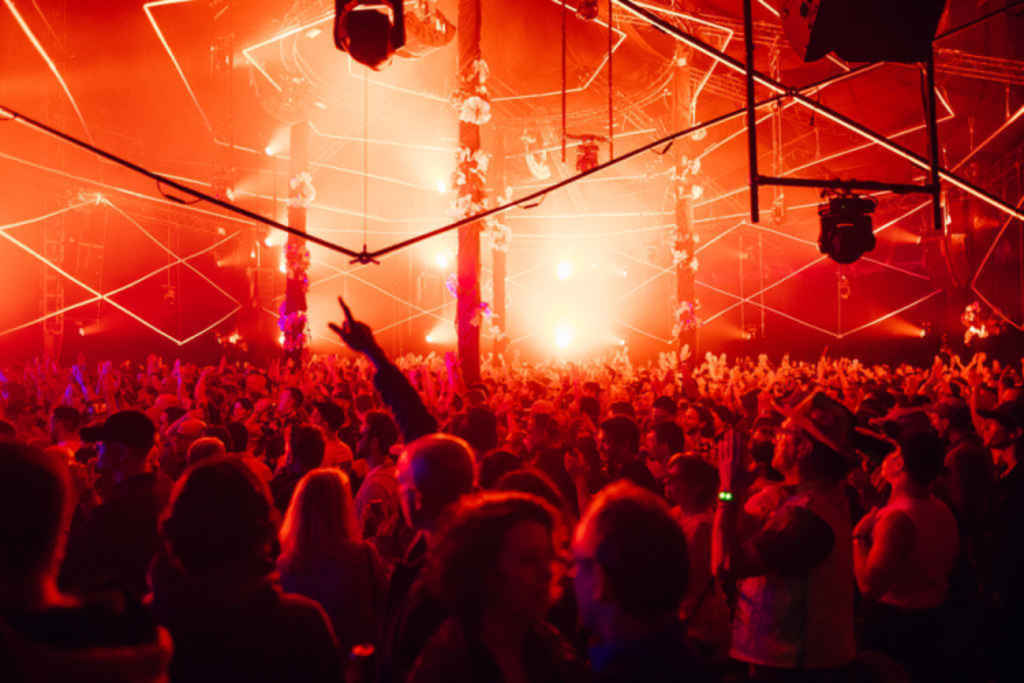
One thing you won’t see at a Polygon festival, which you will at every other festival is giant LED videowalls. Again, it’s all part of putting the audio centre stage. “We’re really excited for audio to be the driving force of the immersive experience supported by lights and whatever else. I find it sad that audio is often the forgotten child of musical experiences, we don’t want videowalls, we want people to be present with the artist and not be distracted by gawping at large video screens. We want lighting
to support the audio, not to take people’s attention towards a screen.” What were the most difficult parts of putting Polygon Live LDN on? “One big factor we had to focus very hard on was finding an acoustic solution for the tent. Tents can be very reflective environment. We can’t consider ourselves audio enthusiasts and then deliver an environment where you’re getting horrible reflections,” says Elliott.
Time was another issue, “I wish we had more sound check time, we had seven artists each day and the local council would only allow us to start sound checking at 10am under very restrictive decibel levels, which meant we really didn’t have sufficient time to do what we wanted with artists to get where we wanted that show to be. There was a lot of pressure.”
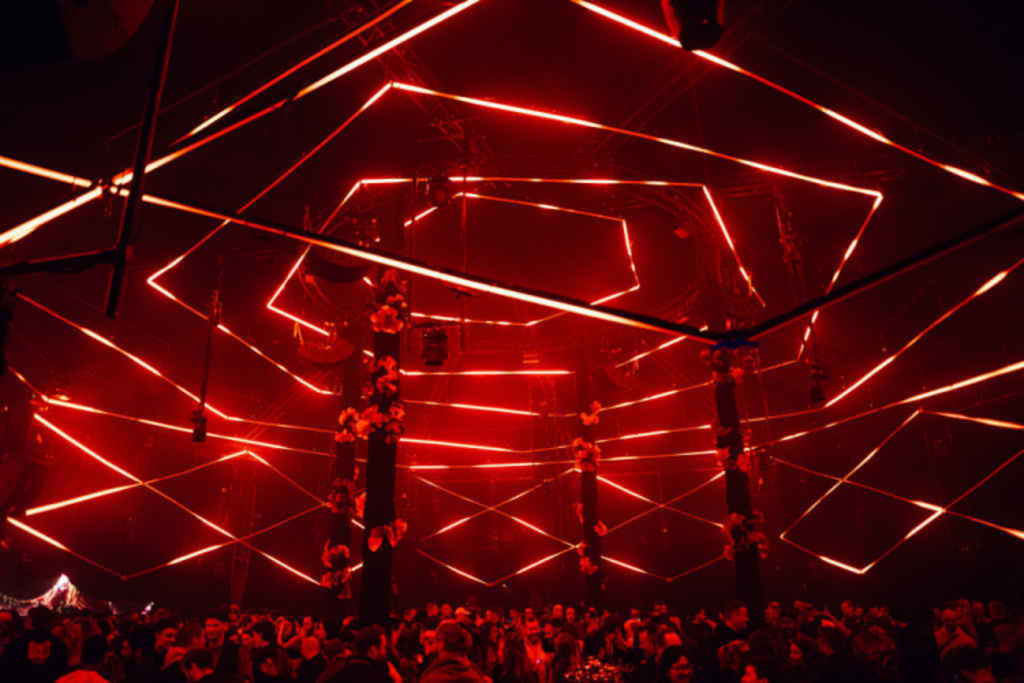
With the final sound being delivered so precisely, was Polygon able to test any of it in advance and bring those elements to the site, or was it all put together in Crystal Palace Park? Designs were done in great detail in AutoCAD etc, so everyone knew exactly what it was going to look like, exactly where everything was hung says Elliott. Polygon used acoustic modelling to find solutions for the acoustic treatment and used the L-ISA software to design the speaker arrays. System integration also involved detailed planning for signal flow and redundancy, with DirectOut and RME hardware supporting critical signal transport and conversion tasks. “We spent a lot of time with L-Acoustics running through different options in terms of what’s going to work best. And we’re always iterating, I don’t think we’ve ever done the same one.”
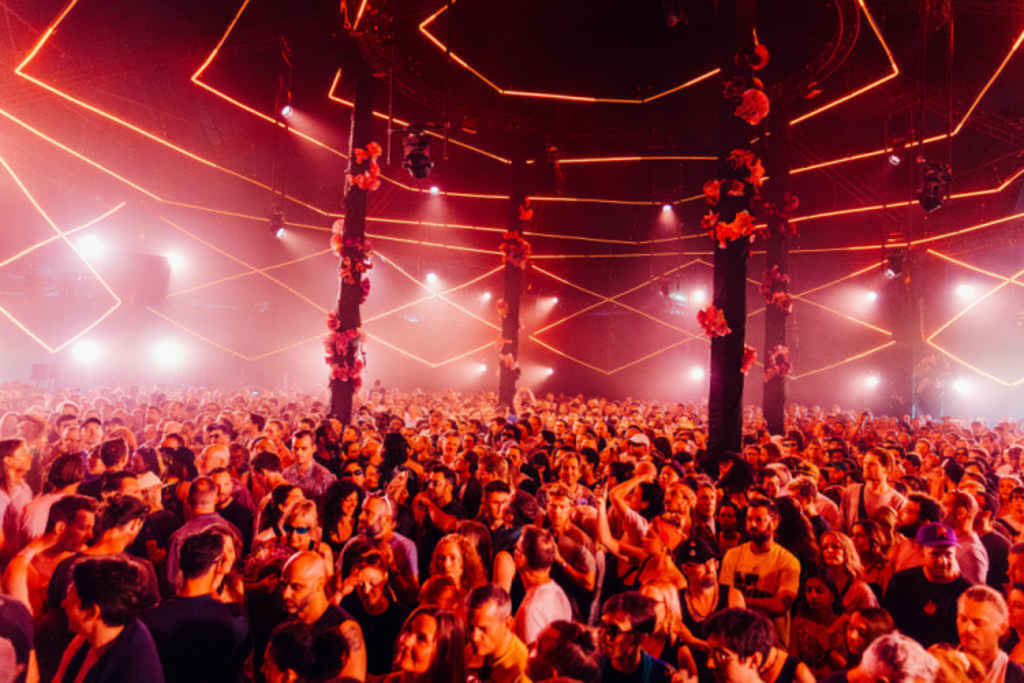
With a large number of loudspeakers and positions, does that pose problems hanging them in a temporary tent structure? A lot of weight loading calculations had to take place explains Elliott. “There was a lot of work on truss designs and truss shapes and sizes. Different countries have different health and safety regulation in terms of weight loading; we’re doing Bonnaroo festival (in Tennessee) later this summer and it’s a completely different design to what we did at Crystal Palace. We’re always learning, there’s a long way to go. The exciting thing is that we’re probably at 50% of what we think can be achieved.”
In a segment of the AV world where audio isn’t always given top priority, for different reasons, it’s great to see companies firmly trying to put it back on top, as Polygon did with Live LDN.
KIT LIST
Digico Quantum series mixing consoles
DirectOut and RME signal processing, audio routing and conversion
L-Acoustics L-ISA software, L2 and X12 loudspeakers, A10 and A15 loudspeakers, KS28 and SB 18 subwoofers, X15 monitors, LA7.16i, LA12X, LA4X amplified controllers
